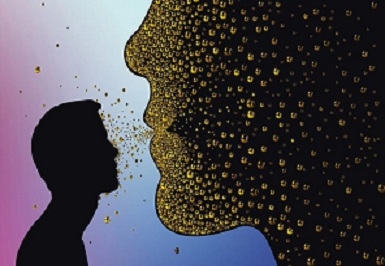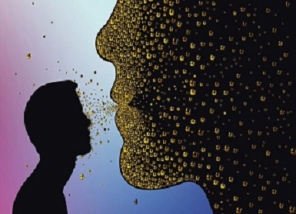 THE FUTURE
THE FUTUREAI interpreting human senses with human intelligence can transform the future of artificial intelligence
Artificial intelligence (AI) is no longer just one application – it spreads far and wide. From robots that can now interpret human senses to the intricate and complex systems that divulge mass amounts of data to make predictions AI technology has advanced massively over the last few years. Now, businesses, hospitals, and governments rely on artificial intelligence to show them what they can’t see.
The future of AI is sure to be bright – with the applications spreading further each year and the core technology behind it advancing rapidly as the months, let alone years, pass by. Below, we’ll explore how AI has come to have the ability to interpret human senses, what else it can do, and what it means for the future.
The Basics Of AI
The progress of artificial intelligence is nothing short of staggering. Essentially, AI aims to get a computer to perform tasks that many once said would require human intelligence to complete. It’s one big supercomputer that can perform human functions like problem-solving, perceiving and learning information, and reasoning.
No, that doesn’t mean the computer has a mind of its own, but rather it can learn and adapt based on data. In motorsports, for example, AI runs hundreds of scenarios in Formula 1 that predict the outcome of an action based on car performances, previous results, track conditions – it takes into account everything to create a picture.
And it holds its value. According to McKinsey – AI will produce over 600 billion dollars in retail revenue over the next six years as the technology is utilized heavily to track and influence buyer habits. Within the same prediction – AI should bring over 50% more value in banking in comparison to other analytical techniques.
Plus, there’s not one single type of AI. AI is categorized in many different ways, one of them being machine learning and deep learning. Machine learning focuses on studying, adapting, and evolving based on algorithms, examples, and experiences. Deep learning isn’t necessarily different from machine learning – it simply means it’s done differently. Machines using deep learning use different layers to divulge the data.
Its Primary Uses
AI has wormed its way into nearly every industry – some industries rely on it heavily compared to others. Trading, for example, now heavily relies on AI to influence results. One example is the software designed to help amateur traders make money by interpreting data and either making the trade for them or alerting them when there’s an opportunity.
Some low-level traders opt to try this because learning to analyze trends and patterns like the bear pennant pattern isn’t easy to master. On a larger scale – huge investment firms rely on AI – machine learning in particular – to deploy algorithms that spot patterns and changes in whatever it is they’re trading.
Another industry to take AI under its wing is retail – one of the areas McKinsey predicts will benefit greatly from AI in the future. AI has developed to interpret shopping behaviors which help businesses understand where their customers are shopping from, their buying journey, and how to maximize that. Brands can now send targeted adverts based on the data they receive from AI technology to create a more personalized and appropriate shopping experience.
How It Developed To Interpret Sense
Recently, MIT has worked on a project that helps AI see the world as humans can. That was always going to be a natural progression for AI as, at the core, AI seeks to emulate human thinking and behaviors. It’s no wonder that MIT scientists have developed a new framework that helps AI experience the world as a human would.
Still, it’s in its infancy. The framework allows computers to analyze scenes and perceive objects from a few images. Essentially – that’s giving computers the ability to see. The framework uses what’s known as probabilistic programming – giving computers the ability to cross-check objects it detects against data inputted which allows the system a chance to detect mismatches.
Many predict that this is simply the beginning for AI and that it won’t be long until AI can interpret other senses, or at least human emotion.
The Future Of AI
The future of AI is bright. Industries that once wouldn’t have considered using AI are now using it heavily to influence their success. The destiny of AI will undoubtedly focus on mitigating risks and improving functionality across a wide range of industries.
Interestingly, many predict that AI will advance towards helping with climate change and other environmental issues through sensors that will help control pollution in cities. That’s just one example. Realistically, it is hard to summarise how AI will develop over the coming years. Some industries will focus on using it to improve their customer retention. Some will use it to increase their trading success. Others will explore how easy it is to make AI interpret human senses.
The scope of adaptation for AI is massive, and it’ll be interesting to see what industries utilize it for what reason. As the technology develops, so does its ability to be scalable and beneficial to everyone, not a somewhat elusive technology people didn’t understand.









